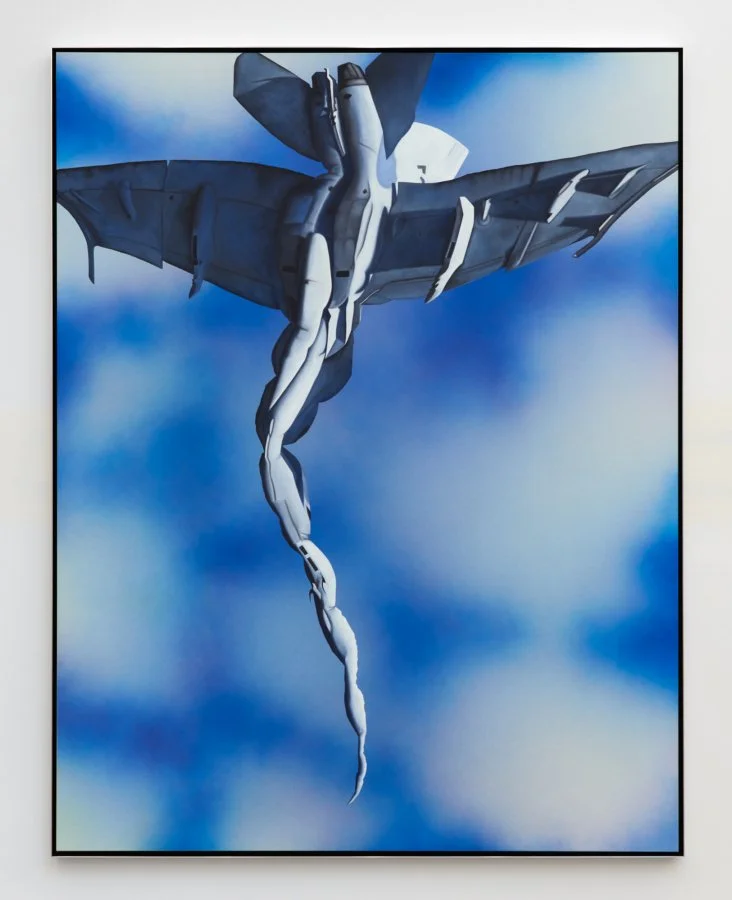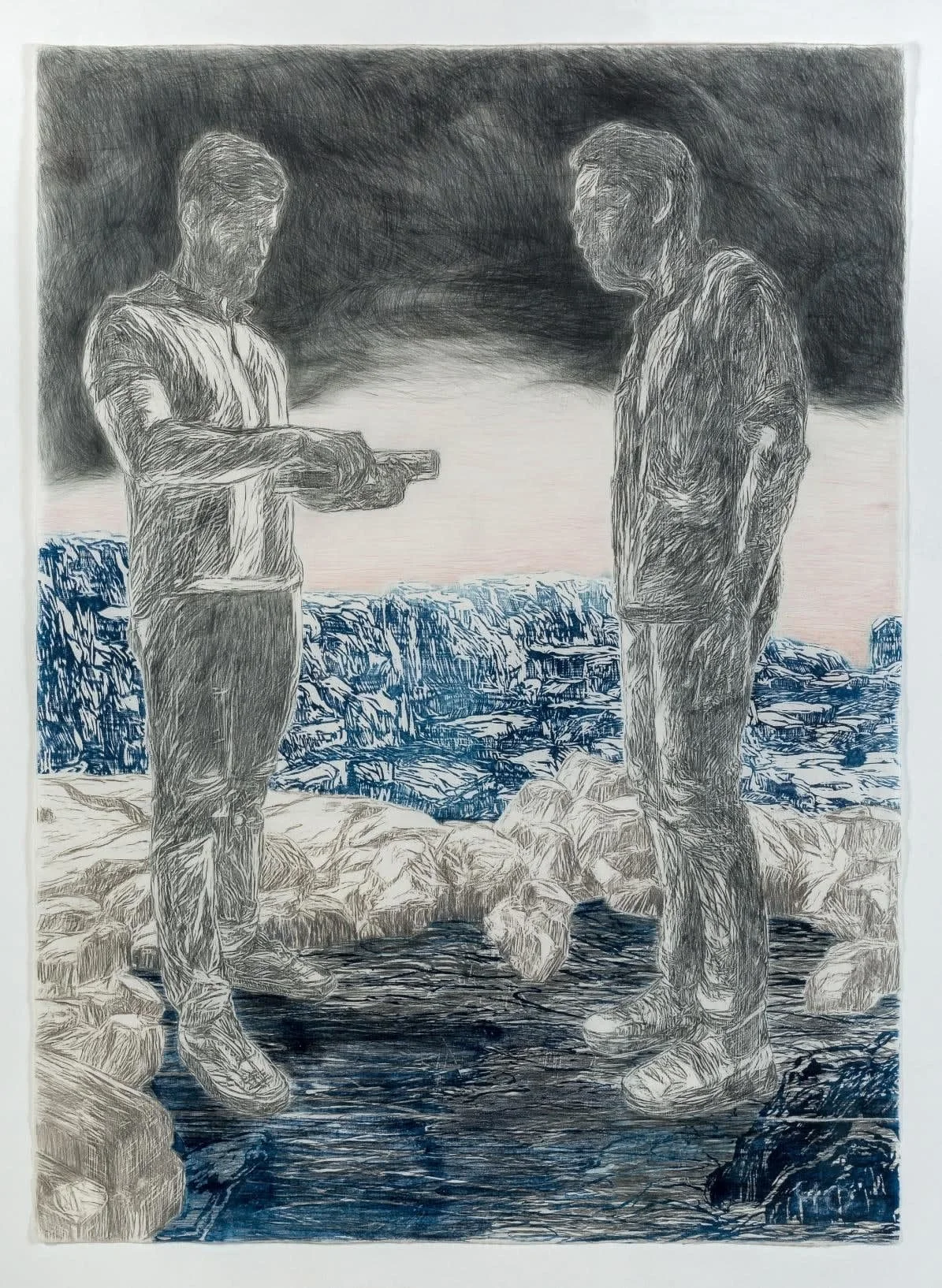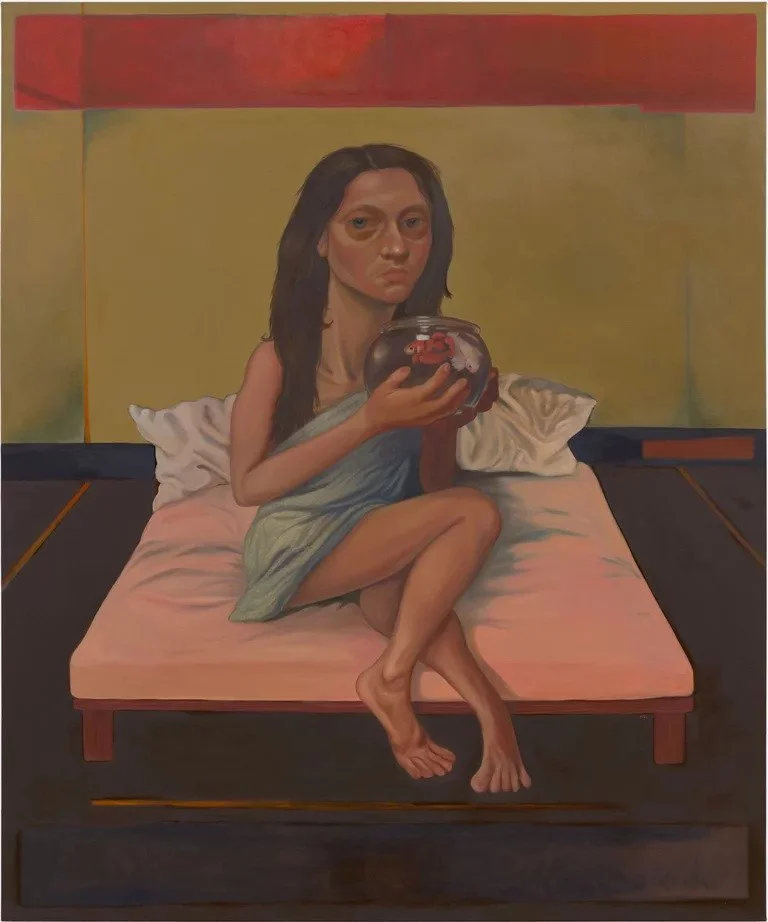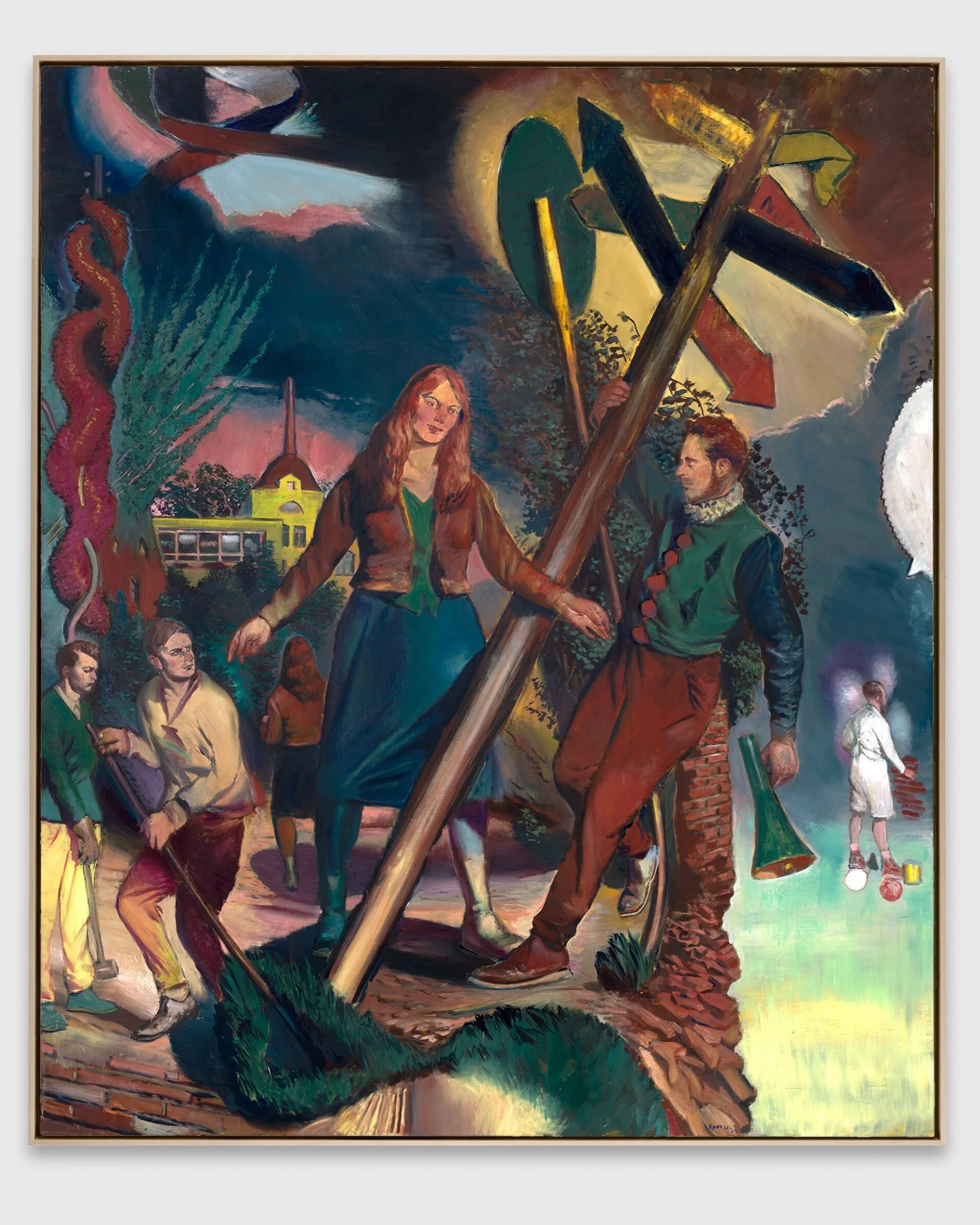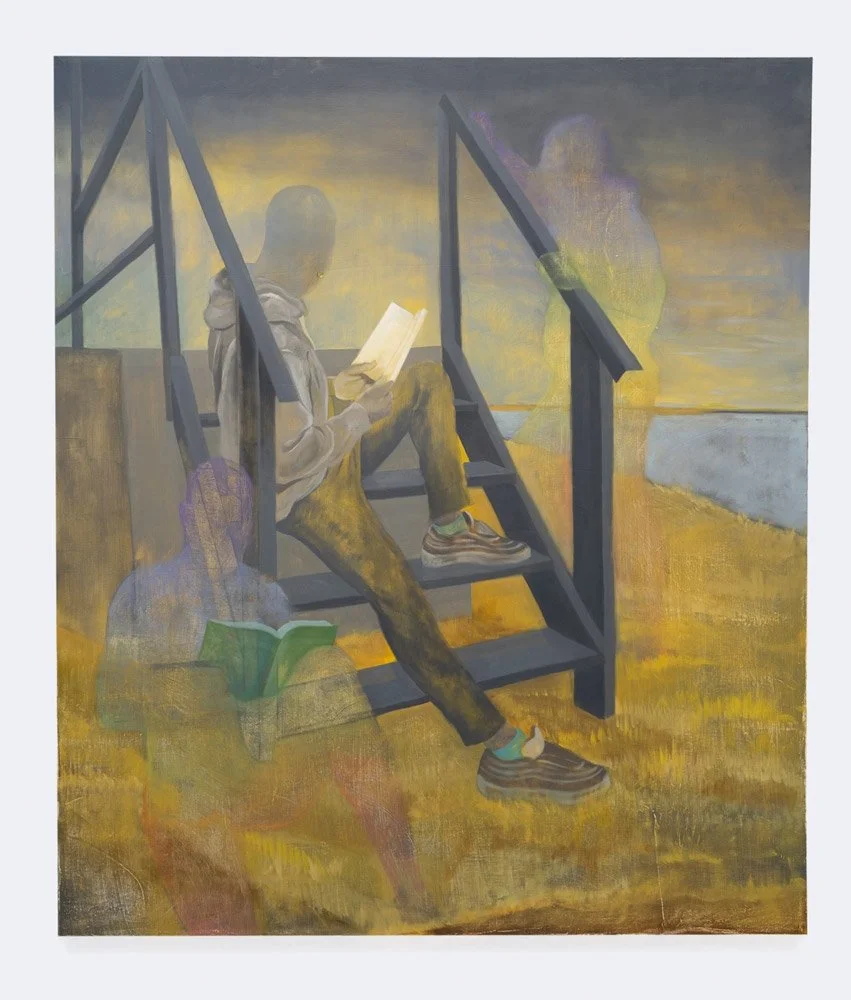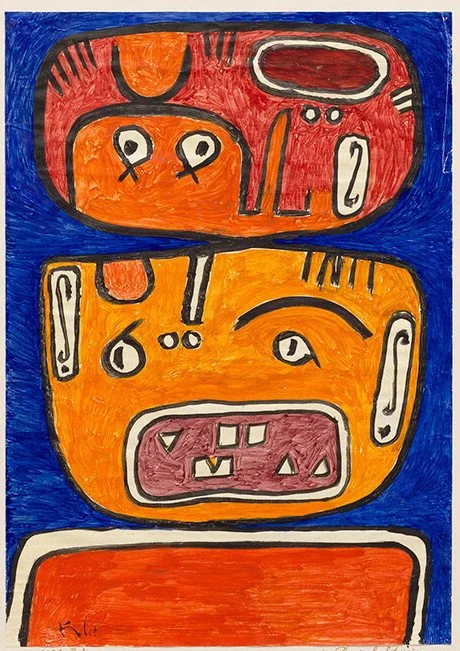Calvin Marcus
“Give Up the Ghost”
New York, 22 East 2nd Street
Suspended in gradients of night sky or among cumulus clouds, the military planes depicted in Give Up The Ghost are twisted, warped, and deconstructed, their bodies at once hyper-technically rendered and strangely animalistic. These supersonic jets—icons of power and strength—have contracted and expanded, as if rendered fragile and flaccid by the speed, pressure, and heat of the atmosphere. The five canvases on view, which measure over eight feet tall and six feet wide, loom before the viewer, their subjects scaled to evoke the sight of a plane passing overhead. The jets remain identifiable as such despite the artist’s alterations—clinging to realism, lest we drift too far into rapture. Abstracted, devoid of any identifiable landscapes, Marcus’s planes appear at once to defy gravity and threaten to fall out of the sky. Here, the sublime beauty and awe of these gleaming machines is in tension with a palpably menacing atmosphere.
Untitled, 2023. Oil, watercolor and vinyl on linen, 101½ × 79 in. (257.81 × 200.66 cm), 103 × 80 1⁄4 in. (261.62 × 203.84 cm) (framed)
The highly refined finish of these paintings, which Marcus made over the course of the last four years, mimics the high-tech aesthetic of the jets themselves. This approach speaks both to the aerospace industry’s twentieth-century dominance in Southern California, where the artist lives, and to the “Finish Fetish” art that subsequently emerged from its crucible. To that end, as in the rest of his practice, Marcus chose his medium and formal approach to best reflect the conceptual underpinnings of the body of work: his smooth, hyperreal brushwork in oil echoes the glossy contours and sleek lines we associate with visions of the future. The artist’s attention to detail is taxonomically precise; he sourced imagery from books, toy packaging, and the internet, rendering his subjects meticulously only to—just as carefully—dismantle their aerodynamic forms. Building on photorealism’s obsessive replication of images, Marcus torques and perverts the genre.
Against a flat, cerulean sky, a grouping of identical planes, pinched at their necks like a shuttlecock or bunch of radishes, performs a dramatic nosedive. On another wall, a work depicts a single contorted jet. Its glistening aluminum body contrasts starkly against soft, atomized clouds. Twisting in an eerie, unseen wind, it evokes the sound of metal pinging and creaking under the pressue of distortion. Two intact planes stand apart from their distorted fellows. Faithfully rendered and set against subtly shifting, darkened skies, these works anchor Marcus’s surreal transformations in the realm of the real. Festooned with rockets, their forms represent an imminent threat. In comparison to the mangled planes, these jets are, paradoxically, uncanny in their realism. Where the other works are studies in movement and iteration, these paintings contend with the difficulty of looking at the world as it is. Here, reality is stranger—or perhaps more sinister—than fiction.
Colloquially, “giving up the ghost” refers to the moment a machine stops working, its animating spirit exhausted. Rather than solid, virile, and ready for action, the majority of these jets are punctured, impotent, buckling against the weight of some invisible force. As throughout his practice, here Marcus’s irreverent humor undermines his subjects’ self-seriousness, transforming the machines from functional weapons into darkly comic ruminations on the labored construction of masculinity. These planes are emblems of failed machismo, objects onto which fantasies of control are projected and never realized. Marcus’s hyperreal depictions admit to a socially conditioned fascination with speed, violence, and technology. The promise of progress sold by the military industrial complex is dangerously seductive, and these sleek, dancing forms admit to its ambient influence on us all.

